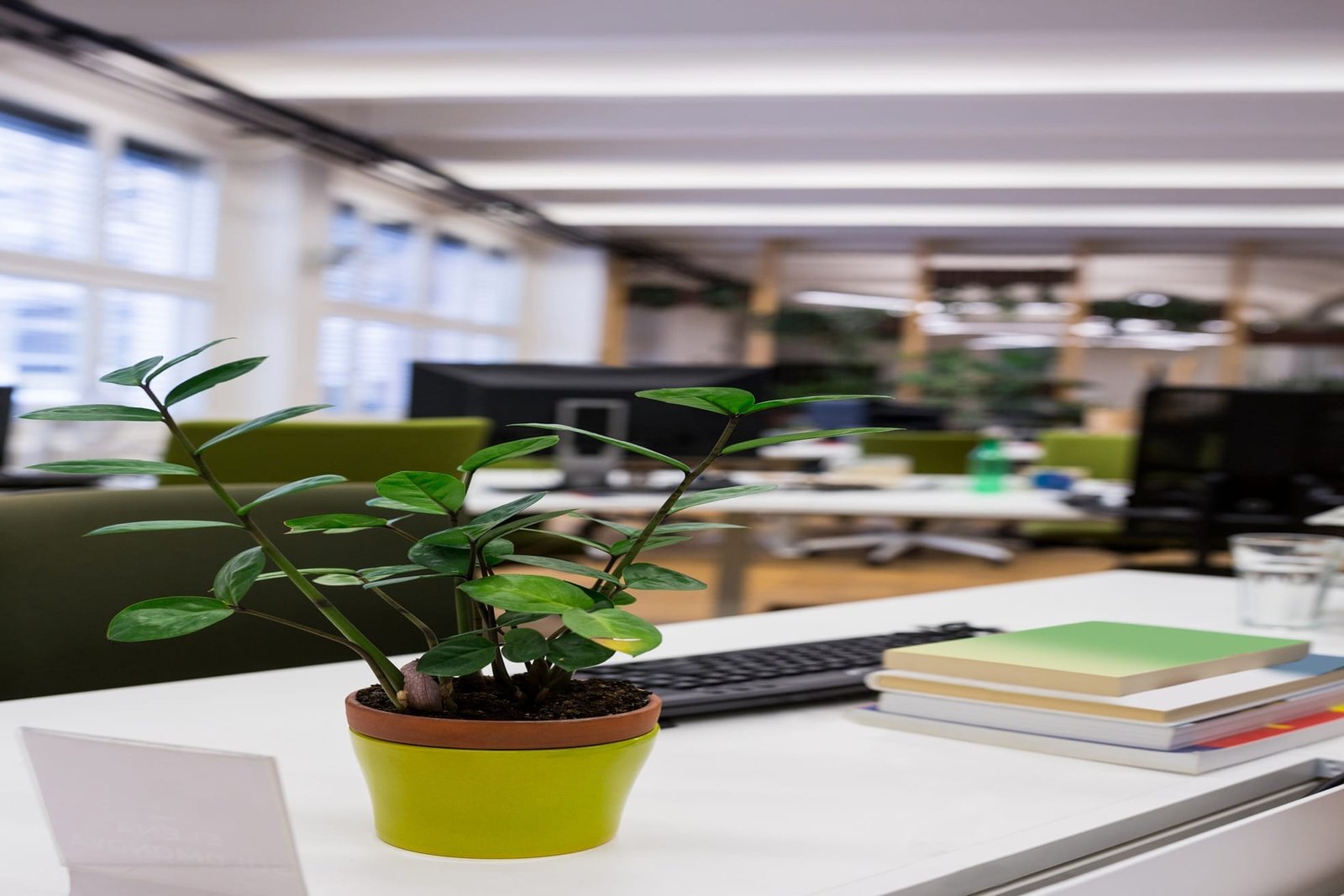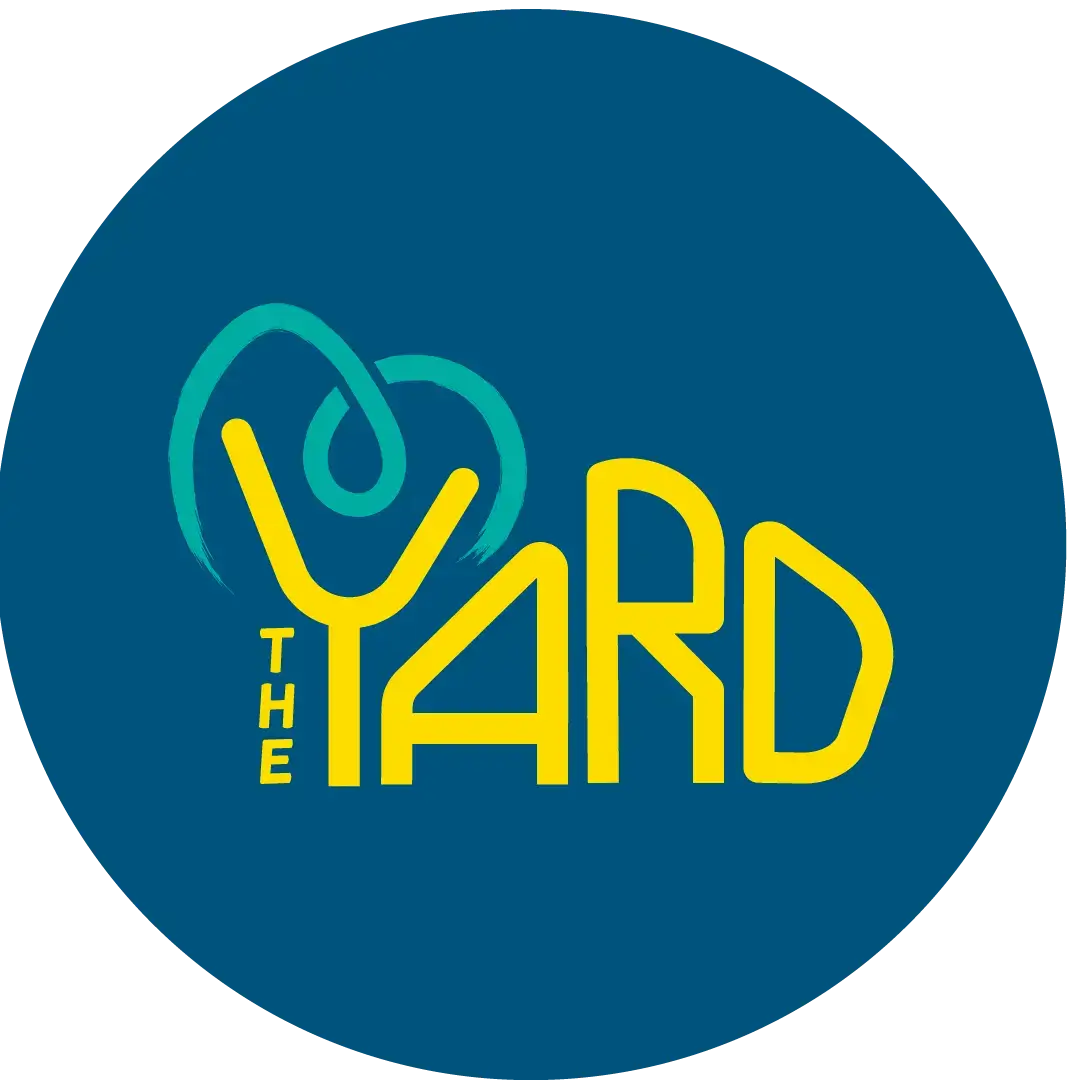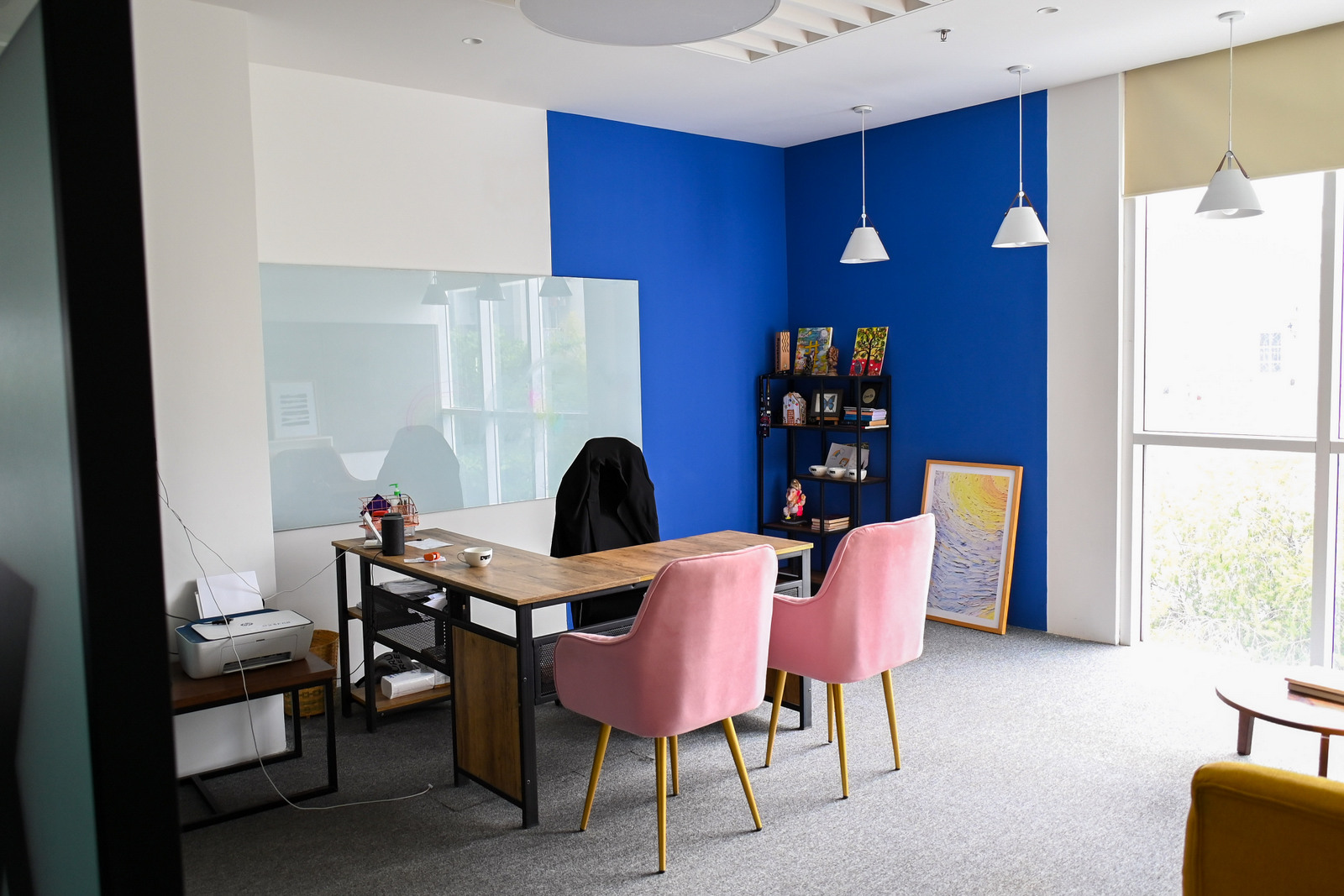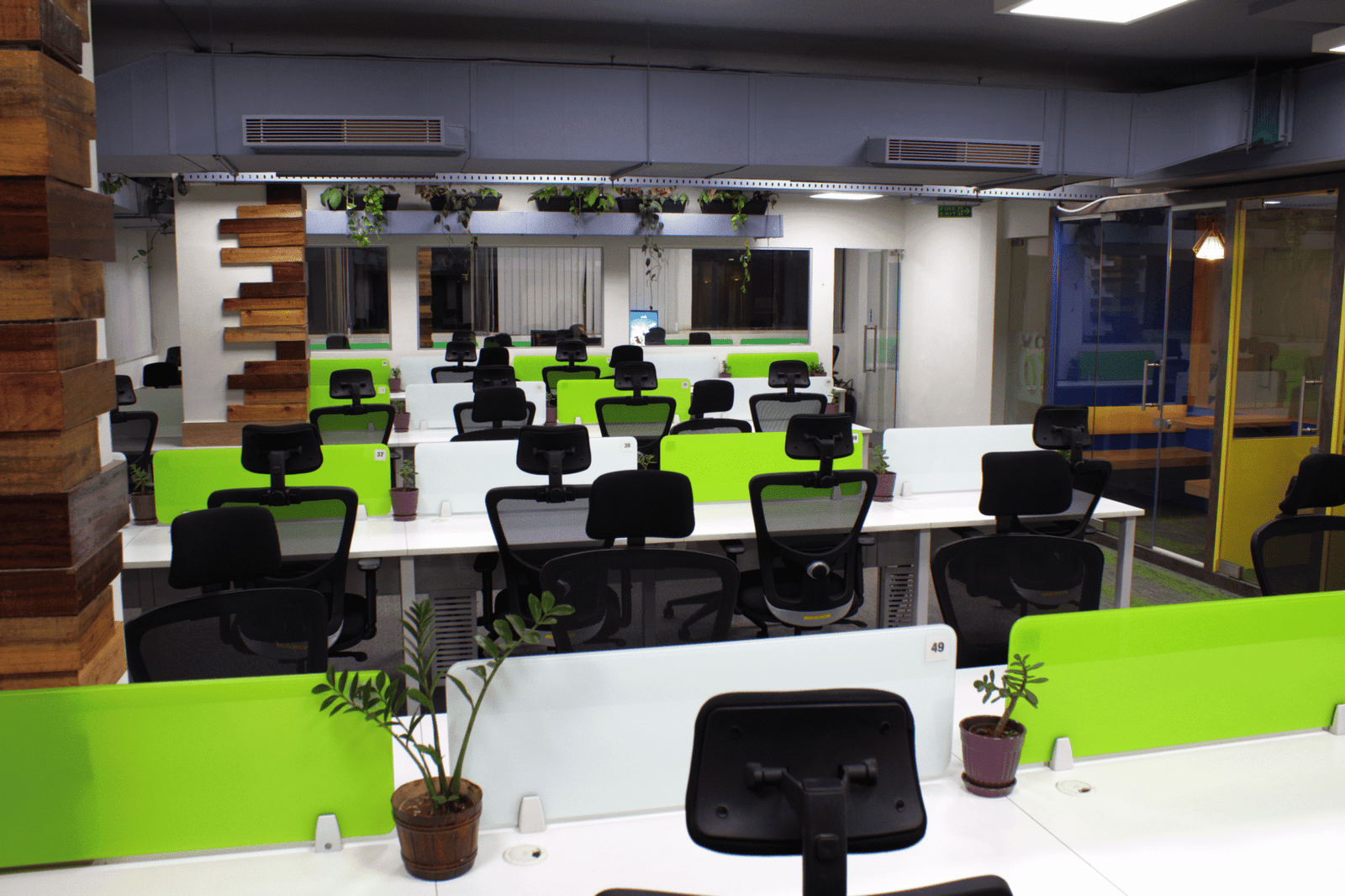
Green Workspace: How To Bring More Green To Your Boring Workspace?
A sterile office environment can silently drain energy, innovation, and emotional well-being. While modern design focuses on minimalism and efficiency, it often neglects what science has proven repeatedly , humans need nature.
Research from the University of Exeter shows that employees are 15% more productive when workplaces are enriched with plants. A green workspace doesn’t just elevate mood; it reduces absenteeism, increases focus, lowers stress levels, and can even improve indoor air quality.
A boring workspace is a symptom. A green workspace is a solution.
Why Green Workpace is Must Need for Better Productivity?
1. Start With Plants , But Think Beyond the Desk Succulent
Indoor plants do more than look pretty , they’re natural air purifiers, mood boosters, and creativity igniters. But simply placing a cactus on a desk won’t do much. Here’s how to green your space like a pro:
- Go Vertical: Install living green walls using planters or pocket pouches. These walls reduce toxins like benzene and formaldehyde and make a bold visual statement.
- Think Bigger: Large potted plants like Dracaena, Areca palm, and Fiddle Leaf Fig enhance indoor air quality and bring in a sense of grounded calm.
- Create Zones: Use plants to create quiet zones, meeting pods, or relaxation corners. They function as natural barriers and reduce noise pollution.
- Assign ‘Plant Parents’: Create a rotating care schedule where employees take turns nurturing the plants , it builds responsibility and connection.
- Let Light In: If your office has good natural light, choose sun-loving plants. Otherwise, opt for low-light survivors like Snake Plants and ZZ Plants.
Slouch Online Tip: Combine plant décor with biophilic design , include wooden textures, stone finishes, and water elements to mimic nature’s ecosystem.
2. Go Green With Energy , Smarter Than You Think
Sustainability begins with energy use. Most offices waste more energy than they consume purposefully. Here are low-lift ways to cut the power bill and carbon footprint:
- Smart Lighting Systems: Use motion sensors to ensure lights are only on when needed. Upgrade to daylight-responsive dimmers.
- Maximize Natural Light: Rearrange desks to allow more sunlight. Use transparent or translucent blinds. Light exposure not only reduces energy use but also boosts serotonin.
- Energy-Efficient Devices: Choose Energy Star-rated printers, appliances, and monitors. Encourage laptop usage instead of desktops.
- Automatic Power Shutdown: Install software or smart plugs that shut down computers and devices when not in use.
- Green Power Source: Consider switching to a renewable energy provider or installing solar panels if possible.
Deskbird Insight: A hybrid working model significantly reduces overall energy consumption by decentralizing resource use. Encourage remote work flexibility where possible.
Also Read:What Are Effect Of Work Environment On Productivity?
3. Ditch the Disposable Culture
The average employee uses 10,000 sheets of paper a year. Offices are major contributors to landfill waste, from single-use plastics to outdated electronics.
To truly go green:
- Go Digital: Replace paper-based processes with e-signatures, digital collaboration tools (like Notion or Trello), and cloud storage to streamline work and save trees.
- Reusable Everything: Encourage employees to bring their own bottles, mugs, and containers. Offer branded sustainable swag to make it a trend.
- Zero-Waste Stations: Set up color-coded bins for recycling, compost, and e-waste with clear labeling and education posters to reduce confusion and contamination.
- Print Only When Necessary: Set default printer settings to double-sided and black-and-white to conserve ink and paper.
- Eco-friendly Supplies: Use biodegradable pens, plantable notebooks, bamboo stationery, and refillable markers that leave no trace.
Cooleaf Strategy: Make green habits part of the company’s identity. Run ‘no-waste’ weeks, set team recycling challenges, and publicly celebrate eco-conscious behavior.
4. Greenify Your Kitchen & Cafeteria
Your break area should reflect the same values as your workspace. The kitchen is often the biggest contributor to non-recyclable waste.
Here’s how to make it Green Workspace:
- Composting: Place compost bins next to trash and recycling to capture food waste for nutrient-rich soil and less landfill contribution.
- Plant-Based Meals: Introduce a vegetarian lunch day or encourage vendors to serve more plant-based options for both health and sustainability.
- Bulk Dispensers: Store grains, snacks, and tea in labeled glass jars to cut packaging waste and look stylish.
- Sustainable Coffee & Tea: Choose fair-trade, organic blends. Offer reusable filters and avoid single-serve pods to reduce daily waste.
- Green Cleaning Supplies: Use biodegradable, non-toxic cleaning products for countertops and utensils that are safe for both humans and the planet.
Green Office Pro Tip: Host monthly green potlucks , a fun and engaging way for teams to contribute to eco-friendly eating.
5. Furniture That Doesn’t Cost the Earth
Furnishing choices can make or break your sustainability goals. Replacing items every time you scale leads to resource depletion.
Here’s how to rethink your office furniture:
- Upcycled & Reclaimed: Source materials from construction salvage yards or buy from brands that specialize in reclaimed wood and reduce landfill waste.
- Modular Furniture: Choose desks, chairs, and tables that can be reconfigured to suit changing team sizes and layouts without repurchasing.
- Furniture as Art: Use locally sourced, artisan-crafted pieces that reflect your values and regional culture while supporting small businesses.
- Eco-Certifications: Look for FSC-certified wood, VOC-free finishes, and brands that offset emissions for every piece they sell.
The Yard Model: Every corner is unique because it’s built with repurposed sustainable materials and furniture that tells a story , not just fills a space.
6. Green Culture: Involve People, Not Just Policies
Policy can enforce. Culture can inspire. Sustainability thrives when it becomes part of the company’s collective mindset.
Here’s how to embed green values into your culture:
- Green Ambassadors: Assign team members to lead initiatives like monthly eco audits, sustainability events, and green awareness campaigns that generate enthusiasm.
- Education & Workshops: Host sustainability learning sessions on composting, zero-waste living, or how to read energy labels and apply them practically.
- Eco Points System: Track individual and team actions , such as bringing lunch in a reusable box or biking to work , and reward them to gamify the process.
- Volunteer Days: Organize tree planting drives, river clean-ups, or community garden visits that make a local impact.
- Celebrate Milestones: Celebrate reaching sustainability goals with green giveaways or shout-outs in internal newsletters to maintain momentum.
Long-term Success: A green culture drives engagement, builds purpose, and strengthens your employer brand.
7. Create a Nature-Inspired Design Language
Your workspace’s design should reflect Creative Co-Working Environment you want to promote.
- Earthy Colors: Use greens, browns, and muted tones to create a calming vibe and mimic the natural environment of forests and soil.
- Natural Materials: Integrate jute, bamboo, cork, clay, and stone into decor and accessories to reduce synthetic waste and create textural warmth.
- Organic Shapes: Avoid harsh angles and opt for curved, natural shapes that evoke harmony and mirror the flow of rivers, leaves, and hills.
Biophilic design not only improves aesthetics but also reduces fatigue and improves emotional well-being.
8. Invest in Air Quality
Plants help, but technology takes it further.
- Air Purifiers: Use HEPA-filter purifiers to remove allergens and fine dust to protect respiratory health and enhance overall cognitive function.
- Carbon Monoxide Monitors: Keep indoor air safe and accountable to prevent invisible dangers and ensure workplace safety compliance.
- Humidity Controllers: Maintain ideal moisture levels to prevent respiratory issues and keep plants thriving, especially in AC-heavy offices, while also reducing static electricity build-up.
Clean air supports sharp focus, fewer sick days, and better mood regulation.
Also Read: How to Balance Collaboration and Privacy in Coworking Spaces?
9. Greener Commutes
How your team gets to work matters just as much as what happens inside.
- Cycle-to-Work Programs: Offer subsidies, bike racks, and changing areas to make biking a viable option.
- Carpool Rewards: Incentivize ride-sharing with perks or points to reduce carbon emissions.
- Public Transport Reimbursements: Make it easier and cheaper to avoid cars and lower traffic congestion.
- Remote Work Days: Fewer commutes = less pollution and happier employees.
Make commuting part of your sustainability story.
10. Measure and Monitor Progress
You can’t manage what you don’t measure.
- Carbon Tracking Tools: Use platforms like SustainaBase or EcoTrack to track energy, emissions, and resource use with real-time data.
- Set Goals: Make public commitments on reductions and improvements and share them transparently.
- Annual Sustainability Reports: Celebrate wins and remain transparent with challenges to inspire continued growth.
Transparency builds trust , with your team, clients, and community.
The Yard: A Green Dream Turned Into Architecture
If there’s one place that has redefined what a “green office” looks and feels like, it’s The Yard in Bangalore.
More than just a coworking space, The Yard is a lifestyle statement , consciously designed, community-driven, and environmentally rooted.
What Makes The Yard Special:
- More than 400 plants , living walls, plant clusters, and desk greenery breathe freshness into every inch.
- Upcycled & Artistic Furniture , sourced from local materials, each piece is unique and tells a story.
- Architectural Intent , every corner has been carefully designed to be meaningful, functional, and sustainable.
- Break Room with a Twist , rock climbing wall, pool table, and lounges for creative breaks and mental resets.
- Cafeteria , an aesthetic space for collaboration, curated to serve clean, wholesome meals.
- Women-Run Innovation , a team of visionary women architects and entrepreneurs who lead with heart and purpose.
Why The Yard Matters: It’s not just about plants and furniture , it’s about how the space makes people feel. Connected, inspired, and alive.
A Greener Workspace Is a Greater Workplace
Creating a green workspace is more than a design trend , it’s a movement toward mindful, impactful living. From the air we breathe to the furniture we sit on, every choice matters.
The future of work isn’t just fast and digital , it’s slow, sustainable, and deeply human.
Whether you’re starting with a desk plant or building a coworking haven like The Yard, one thing is clear: a green workspace leads to happier teams, healthier minds, and a stronger planet.
If you’re looking for Best Coworking Space in Bangalore then Yard is your final destination.





Leave a Reply
You must be logged in to post a comment.